2013 Chevy Traverse Review

Although it’s technically the youngest of GM’s large crossovers – it was the last to launch behind the Buick Enclave, GMC Acadia and Saturn Outlook – the Chevy Traverse is ahead of the game now that the three remaining products are getting overhauled.
MILD STYLING UPDATES
FAST FACTS
| 1. A 3.6L V6 makes either 281 hp or 288 hp depending on trim. |
| 2. Cargo room is 24.4 cu-ft behind the 3rd row or 70.3 cu-ft behind the 2nd row. |
| 3. Pricing starts at $30,340 plus $2,000 for AWD. |
| 4. The Traverse gets an industry first front center airbag to protect occupants from hitting each other in a side-impact collision. |
Well, overhauled is maybe too generous. A facelift along with a few alterations inside are the biggest changes for 2013. The most obvious is its front end, which ditches the split-shield look of the old Malibu for one more in line with the upcoming Impala. The gold bowtie doesn’t have a collar anymore, and a trio of lower air intakes make an appearance.
It’s cleaner and more modern than before, although perhaps a little more anonymous. The back end gets larger taillights, while the license plate has moved from the bumper to the tailgate. The effect is that it looks less bulky since that huge panel now has some detail.
CARRYOVER V6
The new power-domed hood promises plenty, but don’t be too disappointed. What hasn’t changed is the Traverse’s 3.6-liter V6, which makes 281 horsepower and 266 lb-ft of torque in base models, or 288 horses and 270 lb-ft if you opt for the dual exhaust.
That Chevrolet continues this practice seems silly – why not just one engine tune for everyone? Every Traverse does use a six-speed automatic transmission, which is now retuned to be more responsive without sacrificing fuel economy.
While Traverse models can be had with all-wheel-drive for around $2,000 more per model, ours was simply front-drive. And only single exhaust, so the lower output too. Still, by saving 250-lbs by not adding AWD (4,713 lb. vs. 4,956) there’s no difference in performance.
Regardless of setup, our tester was rated at 17 mpg city and 24 highway, while AWD models are one MPG worse in each setting (16/23). While a lacking for its class, that’s not bad given the dimension of the vehicle – GM’s Theta triplets are all at the outside edge of the class size.
COMFORT ORIENTED
Mechanically, the same quick-but-light steering remains, as does the suspension, which is more comfortable when cruising rather than carving. While Chevrolet has reworked the oily bits to offer more response and isolation, on the road, the Traverse feels a generation behind, which it technically is… While the engine promises good peak power, it definitely needs to rev to make its grunt, but the noises it makes while winding it out aren’t the most exciting. The Traverse – and its Buick and GMC siblings – would be perfect candidates for GM’s new twin-turbo V6 that’ll debut in the Cadillac CTS later this year.
Those wanting more fun in their three-row crossover should head over to Mazda or Ford, or even Dodge with its revised Durango. But the Traverse does feel solid and stable, and reasonably quiet once up to speed, which can’t be said for the outgoing Toyota Highlander.
Every Traverse gets an upgraded interior that’s nicer to touch and look at, if not overly laden with design flash. The top of the dashboard and door panels are made of softer materials and accented with matte silver finish and blue ambient lights. The instrument panel has been revised, as had the center console with new HVAC controls and – optionally – the 6.5-inch touchscreen MyLink radio. MyLink is a generation down on what’s been introduced by Cadillac with its smartphone-style CUE, but is reasonably clear and easy enough to use.
Otherwise, the smart storage bin on top of the dash, and the big central storage under the armrest remain. One small miscue is that the only USB plug is located in the top bin not the lower console, and there isn’t a cutout to allow for a charge cord, which seems a little silly.
ALL ABOUT SPACE
The Traverse remains available in either seven or eight-passenger trim, with our tester using the latter. Chevrolet says its SmartSlide second-row seats are easy for kids to operate, but now that Nissan has figured out how to access the third row and keep car-seats strapped in, anything else feels a little clumsy. Of its rivals, Traverse’s way-back bench is probably the most usable by adults, but – as always – make sure you have willing volunteers or you may spark a revolution.
One benefit of the Traverse’s big footprint is that you don’t have to choose between people or their stuff. There’s 24.4 cu-ft of space with the third row up, 70.3 with it folded, and up to a cavernous 116.3 with both rows stowed.
Standard safety features have been upgraded too, including a first-ever front-center curtain airbag that inflates between the front row to keep heads from hitting in a side-on collision. Every Traverse also gets a rear-view camera – very important given its size and small rear window – while things like blind-spot and rear-cross traffic warning systems are optional.
VERSUS THE COMPETITION
While base Traverse LS models start at $30,340 – an $850 increase over 2012 – our FWD 2LT rang in at $37,440, which includes chrome trim, 18-inch aluminum wheels, heated eight-way power front seats, leather-wrapped touch-points, heated and dimming exterior mirrors, tri-zone climate control, power rear liftgate, along with the no-cost option of choosing leather seats if desired. It also had the upgraded Bose 5.1 audio system, but neither navigation nor a rear-seat entertainment system ($795 and $1,445 respectively.)
We’ve mentioned some of the Traverse’s competition above – Ford Explorer, Mazda CX-9, Dodge Durango, Toyota Highlander – but also have to add the Honda Pilot, Nissan Pathfinder and the upcoming long-wheelbase Hyundai Santa Fe. Given how many players have moved away from ‘real’ body-on-frame SUVs, there’ll probably be very little cross-shopping between the Traverse and, say, a Tahoe or Suburban, with the latter being significantly heavier, thirstier and more expensive.
THE VERDICT
Overall, the 2013 updates are welcome and make the Traverse more appealing and easy to live with. However, the playing field has changed significantly, not only in terms of competitors in the market, but the quality too. The Traverse doesn’t feel like a top-shelf offering and, unless pure real estate is the driving force, will probably be passed over in favor of newer offerings.
LOVE IT
- Freshened exterior
- More livable cabin
- Acres of interior space
LEAVE IT
- Engine feels overworked, unrefined
- Sharp steering out of step with suspension
- Still some off-putting ergonomics
- Overall dated feel

Mark has worked as an automotive journalist for over 10 years, starting as a student at Centennial College, in Toronto, by launching an auto-review section in the college paper, The Courier. Since then, he's been Editor of Inside Track Motorsport News and its Streetwise section of new-vehicle reviews and industry news, done stints at Carguide and World of Wheels, and currently works as an award-winning freelancer for AutoGuide.com, MSN Autos Canada and more. He's also a first-time father, so don't be surprised if the frustration of properly installing a car seat creeps into his work.
More by Mark Atkinson
















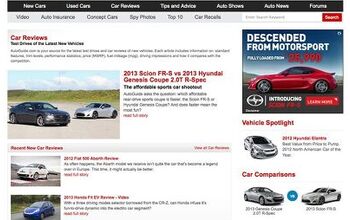





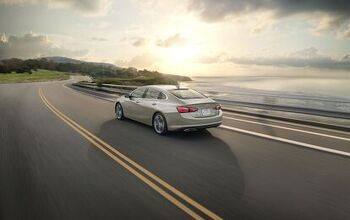



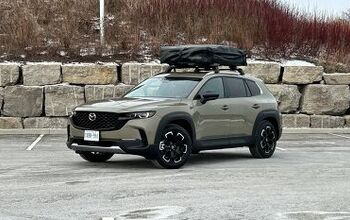

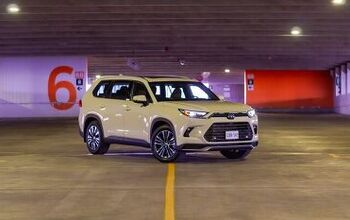
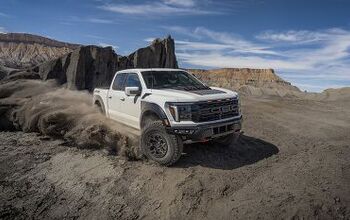

Comments
Join the conversation